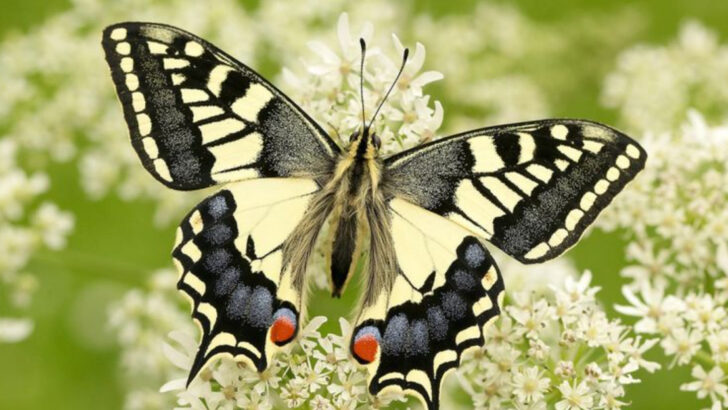Butterflies are like nature’s very own art gallery, each one flaunting wings that could rival the most talented painters. These dazzling creatures glide through the air, their delicate wings painted in bursts of color and intricate patterns that make them seem almost otherworldly.
Every butterfly tells its own story through its vibrant designs, from shades of fiery orange to deep, shimmering blues. Watching one flutter by is like seeing a masterpiece in motion. They don’t just capture our attention—they steal our breath away.
In this post, we’re showcasing 28 of the most gorgeous butterflies in the world. Each one is a living work of art, a testament to the wonders of nature’s creativity. Get ready to fall in love with the breathtaking beauty of these winged wonders!
Blue Morpho
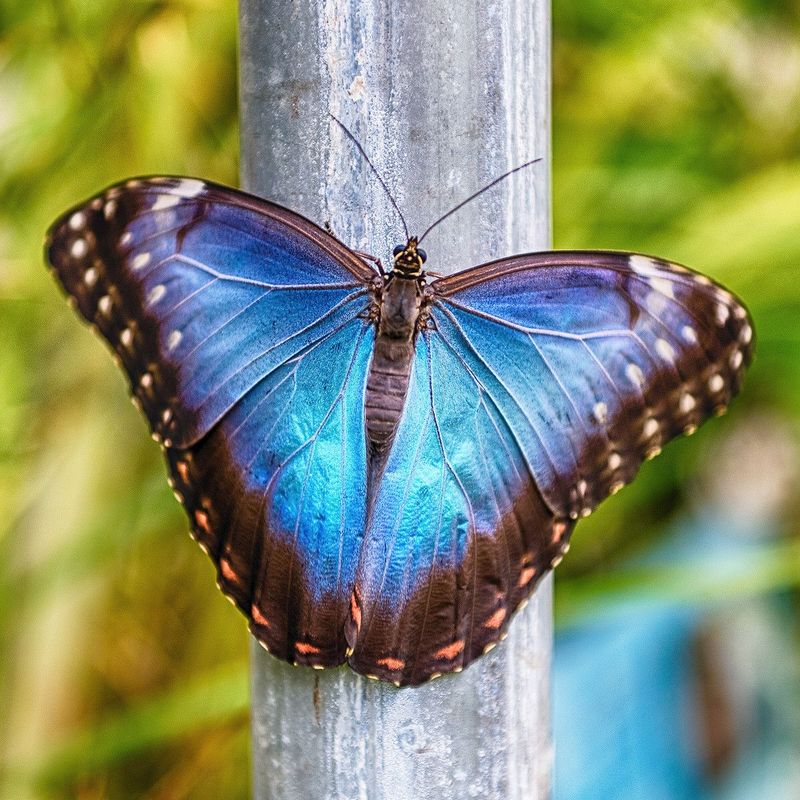
The Blue Morpho butterfly, known for its vivid iridescent blue wings, is a breathtaking sight in the tropical rainforests of Central and South America. Its wings, spanning up to eight inches, shimmer in the sunlight, creating a mesmerizing display.
As it flutters through the forest, the contrasting brown underside of its wings provides a surprising camouflage against predators. This duality makes it both a survivor and a spectacle.
Observing a Blue Morpho in flight feels like watching a piece of sky come alive. Their presence is a testament to nature’s artistic flair.
Monarch
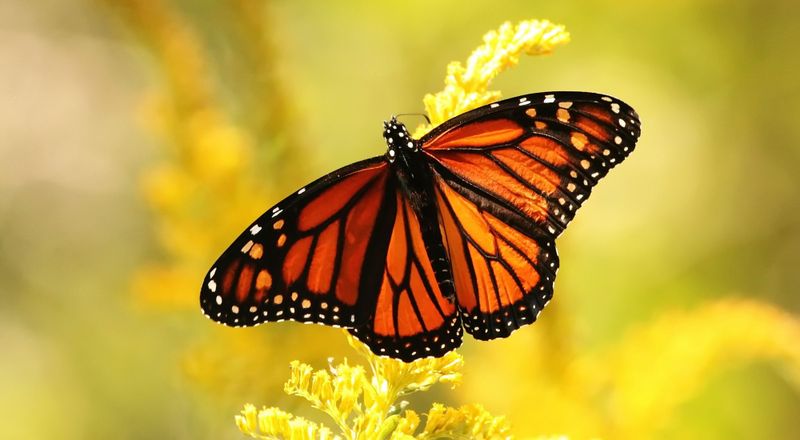
Monarch butterflies are iconic with their striking orange and black patterned wings. Known for their remarkable migration, they travel thousands of miles from North America to central Mexico.
This journey is an incredible feat for such delicate creatures, showcasing resilience and navigation skills that are still a mystery to scientists.
Monarchs rely on milkweed plants for survival, making their conservation essential. Their annual migration is a natural wonder, a reminder of the interconnectedness of ecosystems and the delicate balance required to sustain them.
Glasswing Butterfly
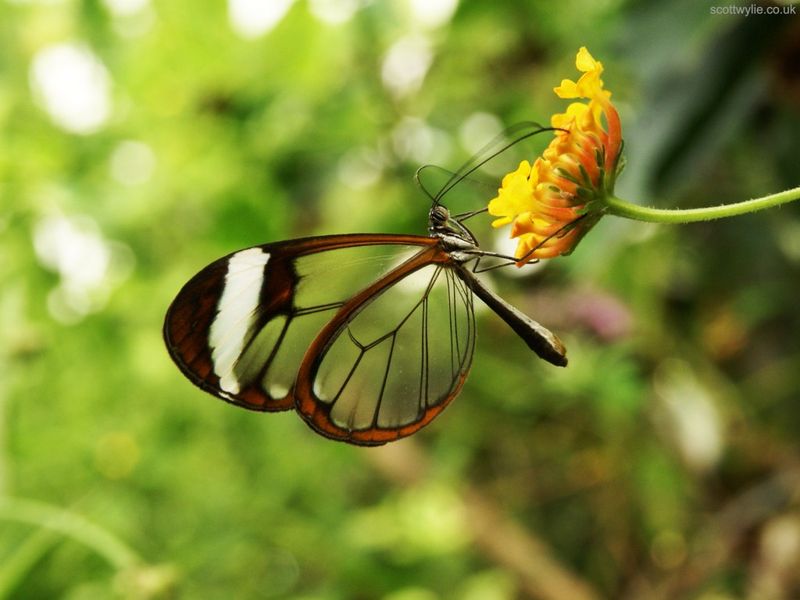
The Glasswing butterfly captures attention with its unique transparent wings, giving it an ethereal appearance. These delicate wings, edged with subtle hues, allow the butterfly to blend seamlessly into its surroundings.
Found in Central and South America, the Glasswing’s transparency is an adaptation for avoiding predators, making it an elusive marvel.
Its beauty lies in its simplicity, proving that nature’s artistry doesn’t always need bold colors. Watching a Glasswing flutter among flowers is like witnessing a piece of living art, gracefully navigating the world.
Peacock Butterfly
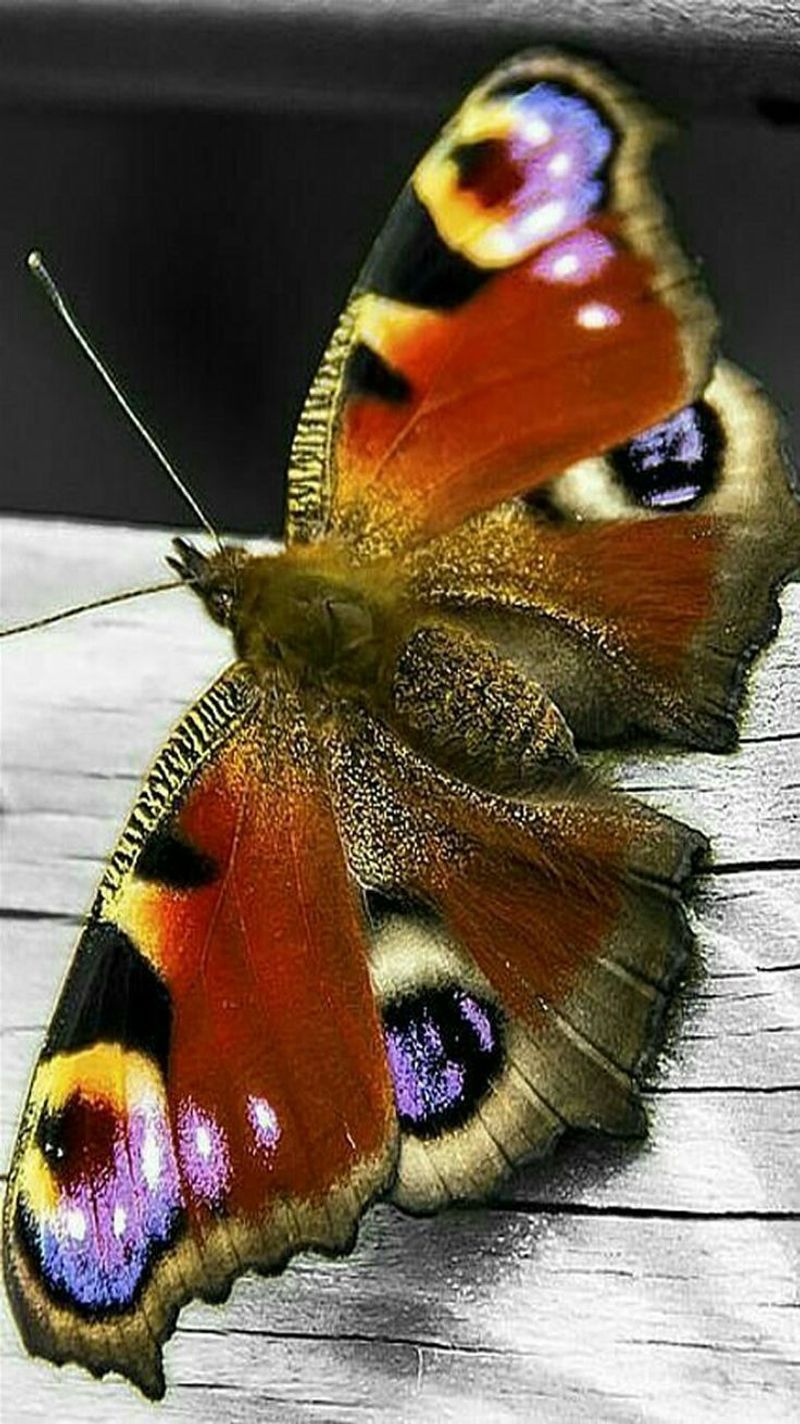
The Peacock butterfly is a visual treat, named for the eye-like spots on its wings that resemble a peacock’s plumage. These spots are not just decorative but serve as a defense mechanism against predators.
Found across Europe, these butterflies are common in gardens where they bask in the sun, displaying their vibrant colors.
Their ability to scare off predators with a sudden flash of their eyespots makes them a fascinating subject of study. The Peacock butterfly’s charm lies in its elegant blend of beauty and strategy.
Emerald Swallowtail
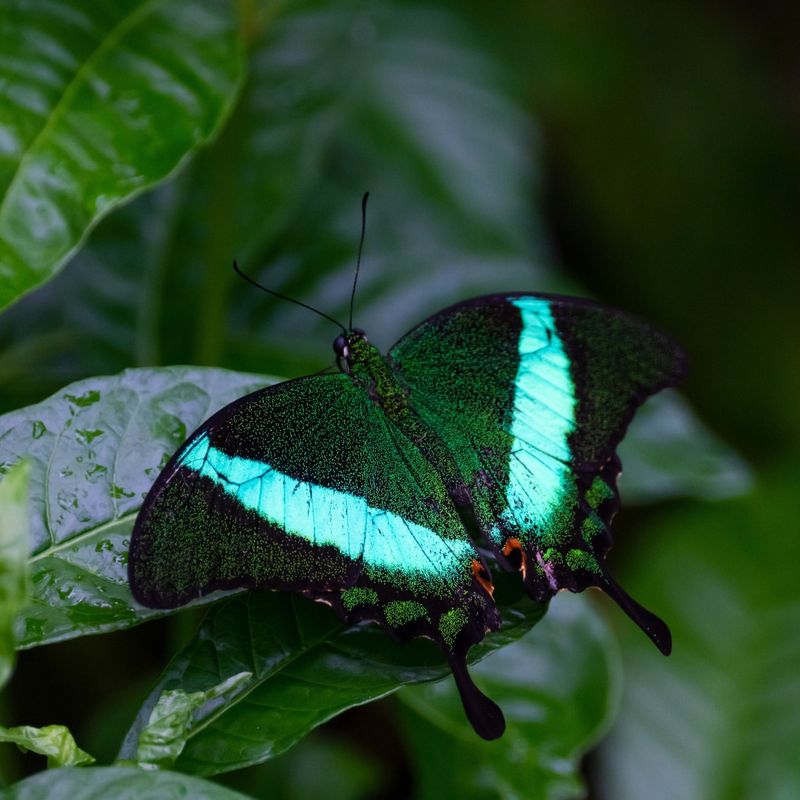
The Emerald Swallowtail is a majestic butterfly, adorned with shimmering green wings bordered by black. Native to the rainforests of Asia, it is one of the most breathtaking members of the swallowtail family.
Its iridescent scales reflect light, creating a dazzling display that can be seen from afar. This striking appearance not only attracts mates but also deters predators.
Observing an Emerald Swallowtail in flight is like witnessing a jewel in motion, a testament to the allure and intricacy of the natural world.
Zebra Longwing
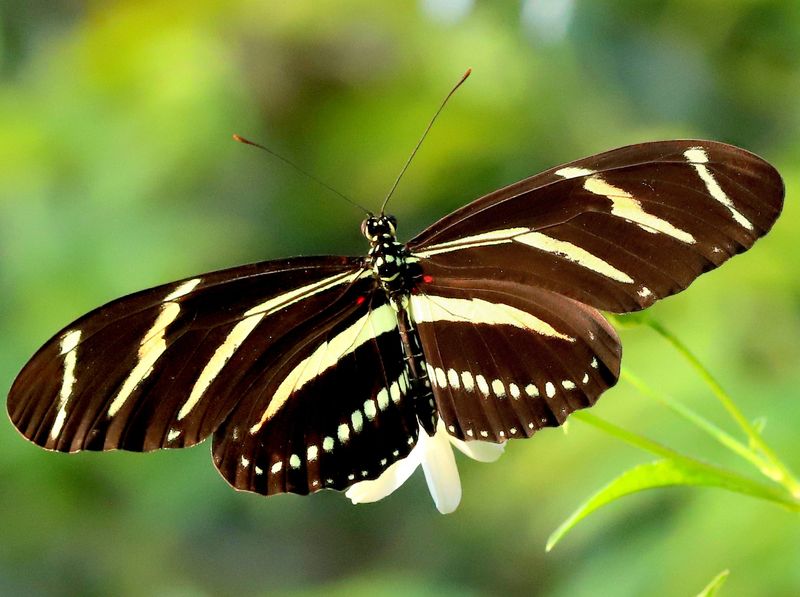
The Zebra Longwing butterfly is distinguished by its black and white striped wings, resembling the pattern of a zebra. Found primarily in Florida and Central America, it is the state butterfly of Florida.
This species is known for its leisurely flight and social behavior, often roosting in groups overnight. Its diet includes pollen, which provides nutrients allowing for a longer lifespan than most butterflies.
The Zebra Longwing’s graceful presence and unique feeding habits make it a favorite among butterfly enthusiasts and a symbol of nature’s diversity.
Painted Lady
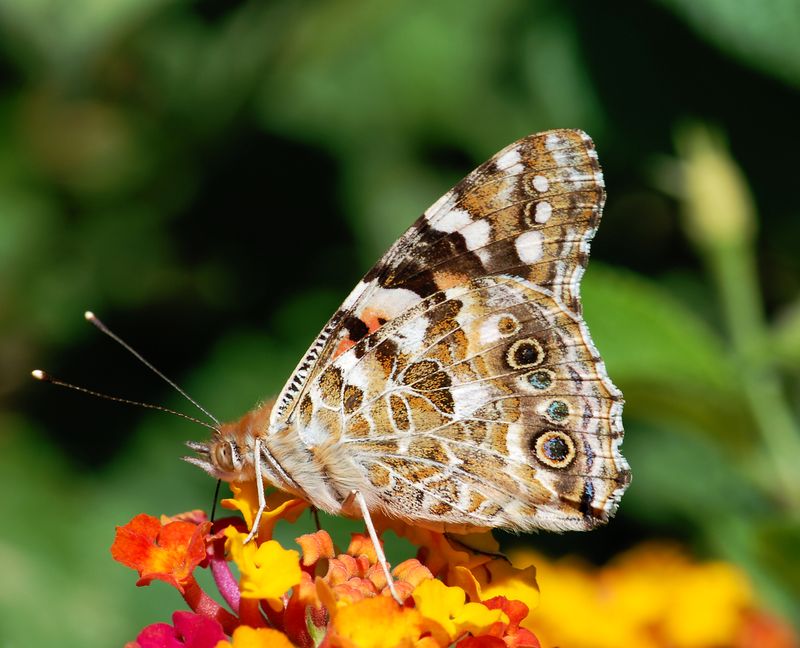
The Painted Lady butterfly is a global traveler, recognized by its orange, black, and white patterned wings. Found on every continent except Antarctica, it is considered the most widespread butterfly species.
Despite its delicate appearance, the Painted Lady is a strong flier, capable of long-distance migrations. Its adaptability to various climates and habitats contributes to its widespread presence.
Watching a Painted Lady flutter from flower to flower is a reminder of the resilience and adaptability inherent in nature’s creations.
Postman Butterfly
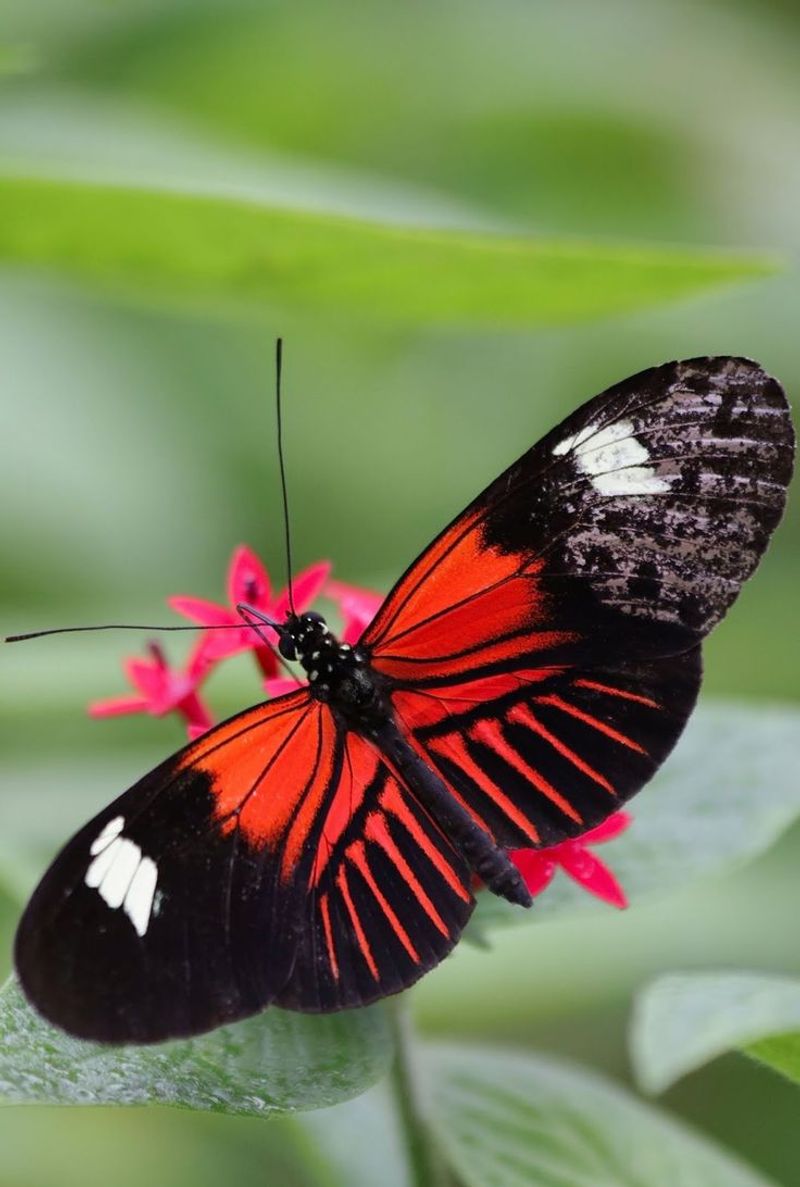
The Postman butterfly is instantly recognizable by its bold red bands on black wings. Found in the tropical forests of Central and South America, it is known for its leisurely and direct flight patterns.
The Postman feeds on the nectar of passionflowers and plays a crucial role in their pollination. Its striking coloration is a warning to predators of its unpalatable taste.
This vibrant butterfly embodies the concept of beauty with a purpose, showcasing the intricate relationships within ecosystems.
Swallowtail Butterfly
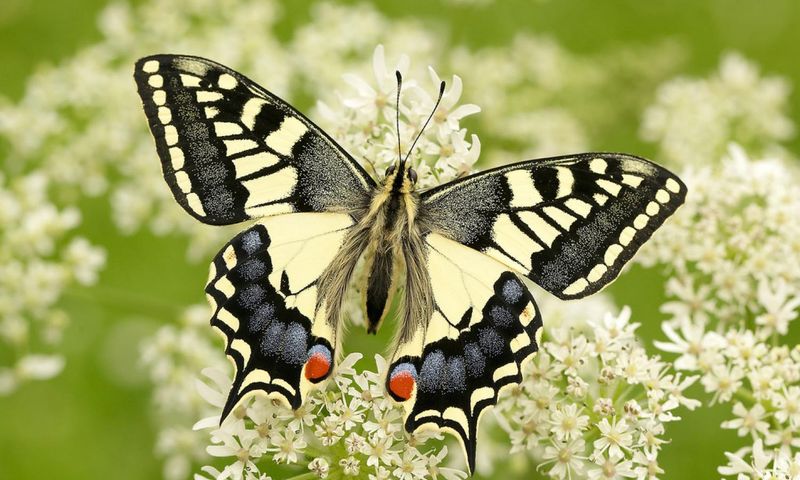
Swallowtail butterflies are known for their distinctive tail-like extensions on the hindwings, adding an element of grace to their flight. They are found worldwide, with over 550 species exhibiting a variety of colors and patterns.
These butterflies are admired for their beauty and adaptability, thriving in diverse habitats from meadows to gardens. Their larvae often mimic bird droppings as a defense mechanism against predators.
The Swallowtail’s elegant form and striking appearance make it a beloved subject for photographers and nature enthusiasts alike.
Red Admiral
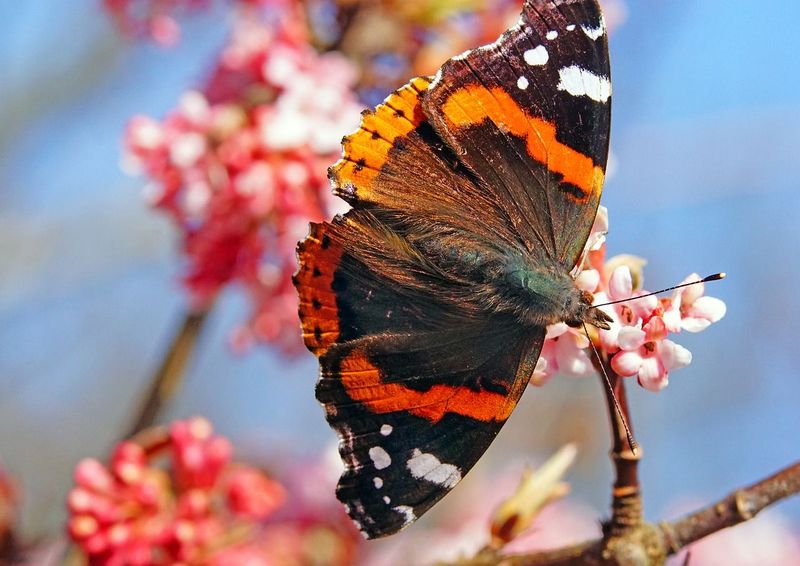
The Red Admiral butterfly, with its striking red-orange bands against dark wings, is a common sight in gardens and parks. Known for its territorial nature, it often chases away other butterflies and insects.
This species is found across temperate regions, and its adaptability allows it to thrive in various environments. The Red Admiral’s presence is often a sign of spring, as it emerges from hibernation.
Its vibrant colors and bold behavior make it a fascinating watch for those who appreciate the nuances of butterfly interactions.
Common Buckeye
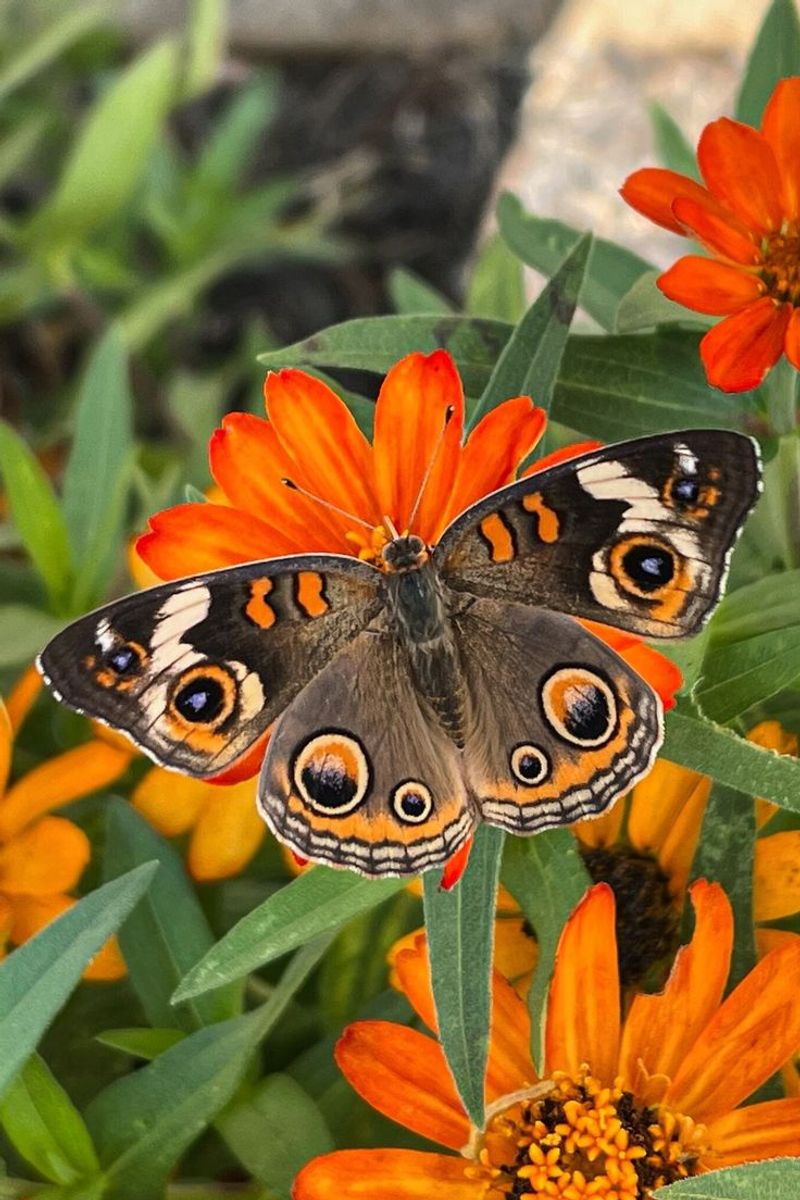
The Common Buckeye butterfly boasts eye-catching eye spots on its brown and orange wings. These spots serve as a defense mechanism, deterring predators by mimicking the eyes of larger animals.
Found throughout North America, the Buckeye is adaptable, thriving in open, sunny areas such as fields and gardens. Its swift, erratic flight adds to its elusive charm.
Observing a Common Buckeye is a delightful experience, as it flits about with a boldness that belies its fragile appearance, showcasing nature’s intricate designs.
Mourning Cloak
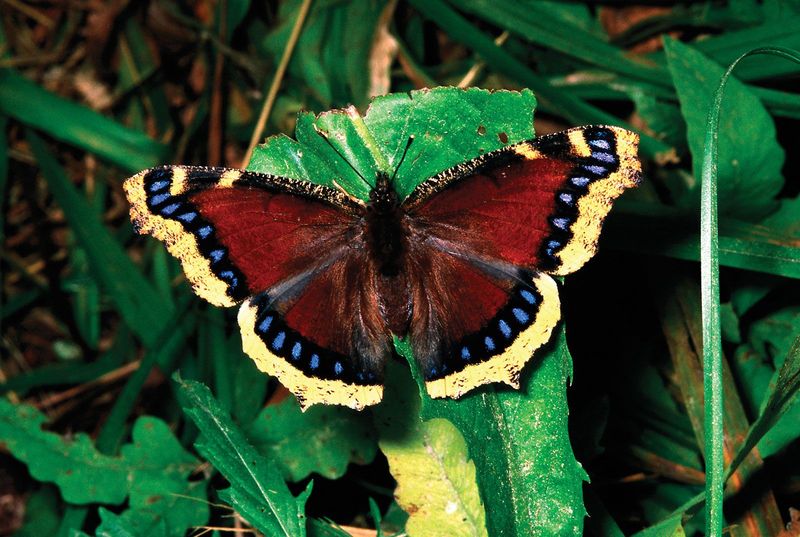
The Mourning Cloak butterfly is a striking sight with its dark maroon wings bordered with a creamy edge and blue spots. Found across North America and Europe, it is known for its long lifespan and territorial nature.
Unlike many butterflies, the Mourning Cloak hibernates as an adult, emerging early in spring to lay eggs. Its caterpillars feed on willow and poplar trees, contributing to forest health.
This butterfly’s name reflects its somber yet beautiful appearance, a reminder of the diverse expressions of beauty in the natural world.
Clouded Sulphur
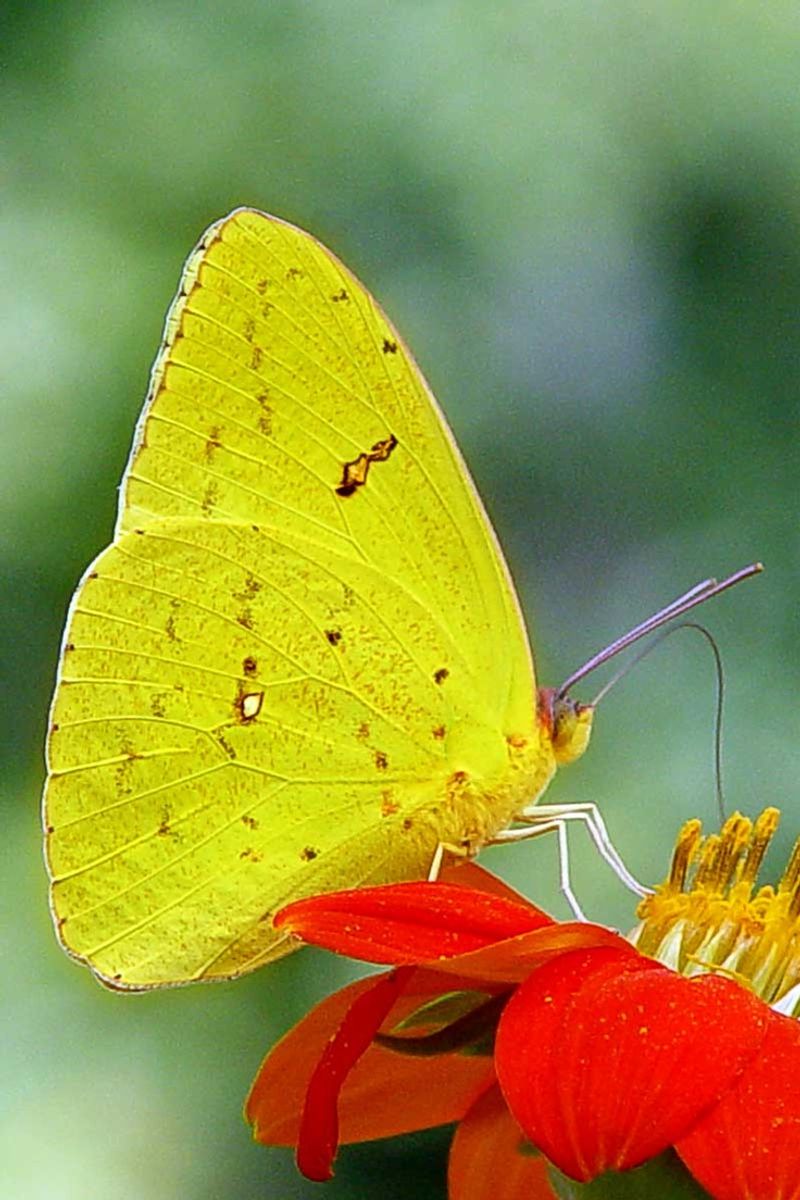
The Clouded Sulphur butterfly, with its soft yellow wings edged in black, is a common sight in meadows and fields across North America. Its cheerful color and fluttering flight make it a delightful addition to any landscape.
This species is highly adaptable, often found in disturbed areas and agricultural fields, where it plays a role in pollination. The Clouded Sulphur’s lifecycle is closely tied to clover and alfalfa plants, on which its larvae feed.
Its presence is a testament to the beauty and resilience of everyday nature.
Great Spangled Fritillary
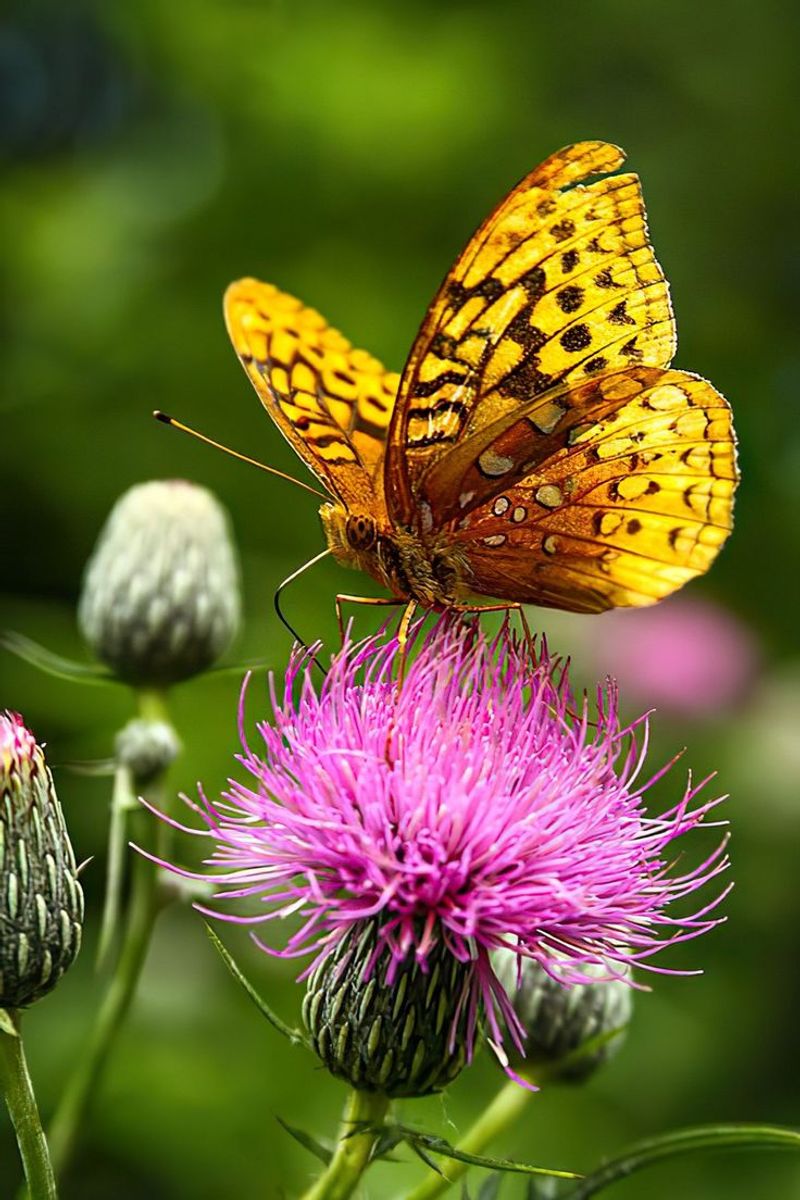
The Great Spangled Fritillary is a large butterfly with vibrant orange and black patterned wings, commonly found in meadows and gardens. Its name reflects the silver spots on the underside of its wings, resembling spangles.
This butterfly feeds on violets during its larval stage, making these plants essential for its survival. As an adult, it delights in the nectar of various wildflowers, contributing to their pollination.
The Great Spangled Fritillary’s presence adds a touch of elegance and vibrancy to any landscape it inhabits.
Gulf Fritillary
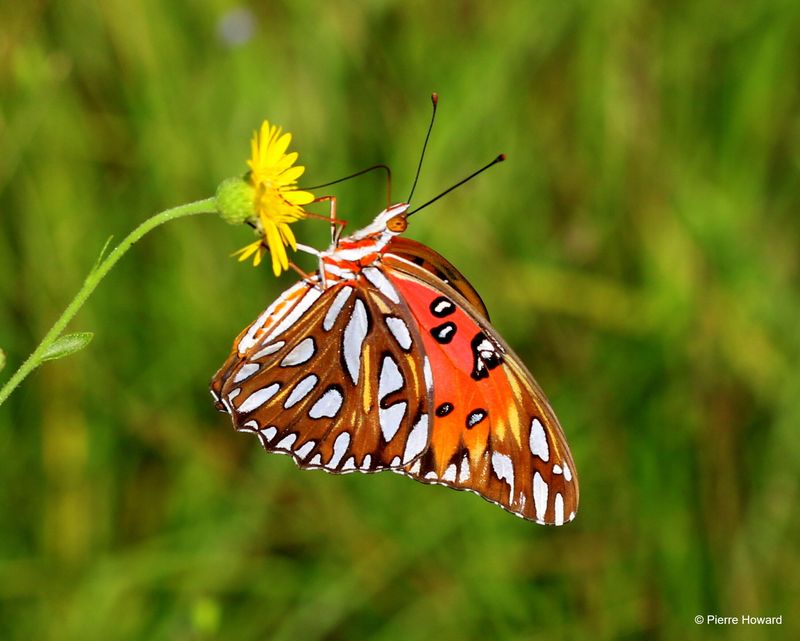
The Gulf Fritillary is a striking butterfly with bright orange wings adorned with elongated silver spots. Common in the southern United States, it thrives in gardens where passionflowers grow.
The larvae feed exclusively on passionflower leaves, while the adults are drawn to various nectar sources. This butterfly’s migratory habits take it as far south as Argentina.
The Gulf Fritillary’s bold colors and dynamic presence make it a favorite among gardeners and butterfly enthusiasts, symbolizing the vibrant spirit of summer.
Malachite Butterfly
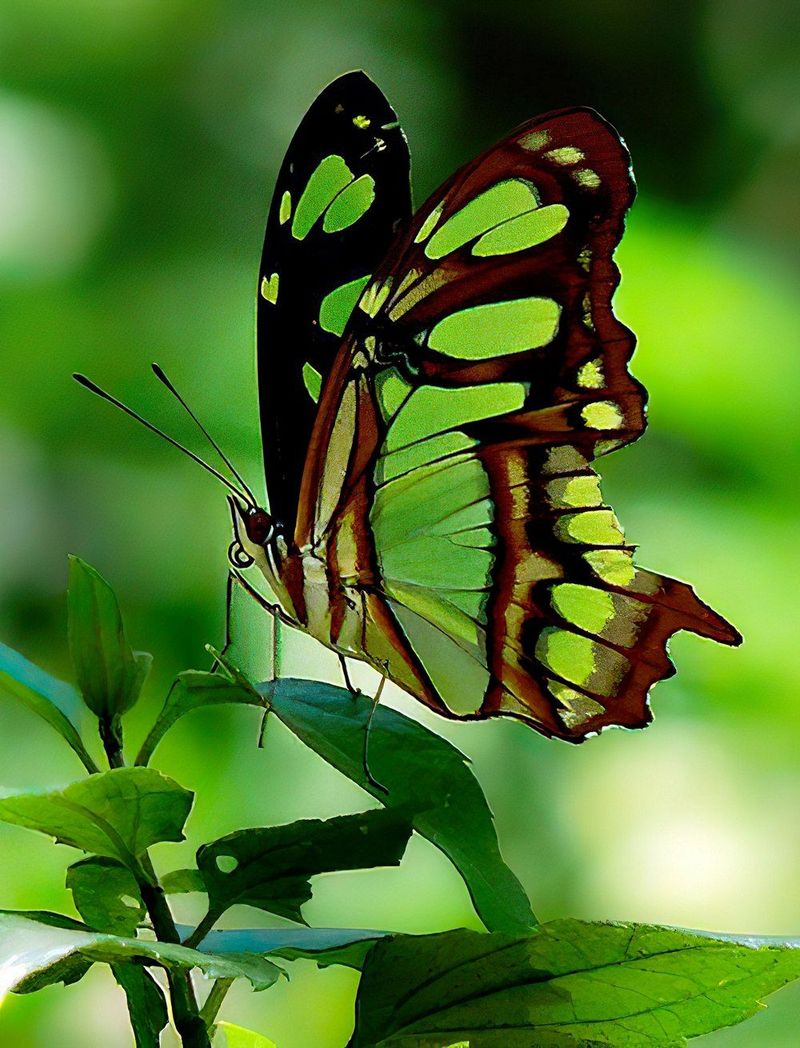
The Malachite butterfly is a visual delight with its lime green and black patterned wings. Native to Central and South America, it is often found in tropical forests and gardens.
This butterfly is named after the malachite gemstone, reflecting its vibrant coloration. Its bold patterns serve as a warning to predators, showcasing nature’s use of color as a defense.
Watching a Malachite butterfly flutter from leaf to leaf is like observing a piece of living jewelry, each movement revealing another facet of its beauty.
Orange Tip
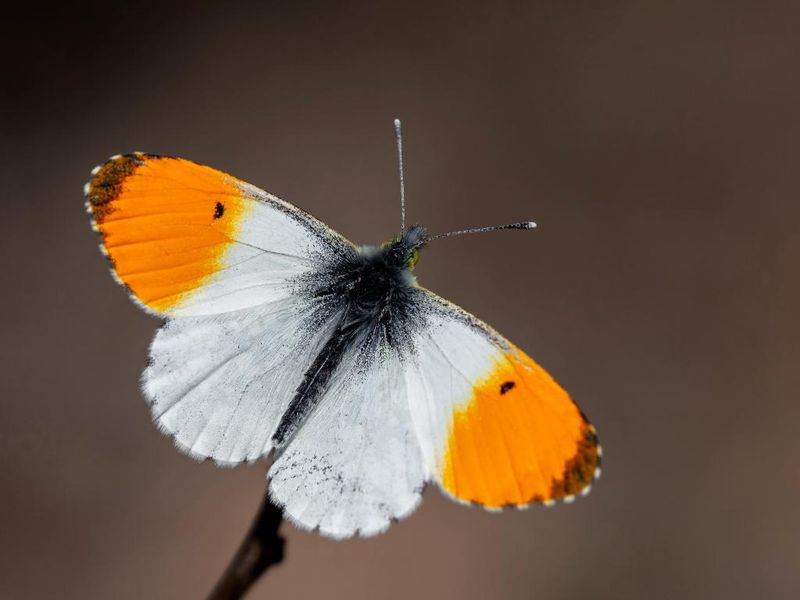
The Orange Tip butterfly is easily identified by its distinctive orange tips on otherwise white wings. Found across Europe and Asia, it heralds the arrival of spring with its cheerful presence.
The males sport the bright orange tips, while females have more subdued markings, aiding them in camouflage during egg-laying. These butterflies are often seen fluttering among wildflowers, where they lay their eggs on plants like cuckoo flower.
The Orange Tip’s seasonal appearance and vibrant colors make it a cherished sign of spring’s renewal.
Comma Butterfly
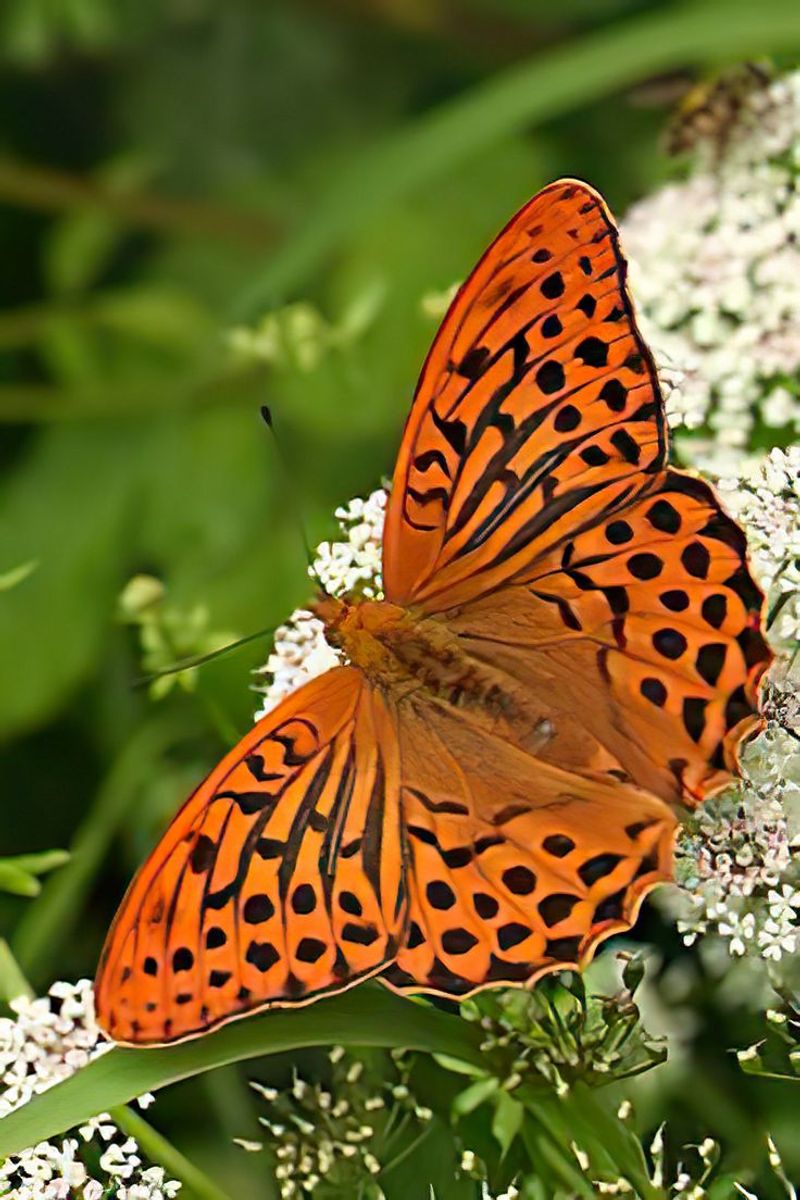
The Comma butterfly is a master of disguise, with ragged wings that mimic dead leaves. Its name comes from the small, white comma-shaped mark on the underside of its wings.
Found across Europe and Asia, it thrives in woodlands and gardens, where it feeds on nectar and overripe fruit. The Comma’s cryptic appearance provides excellent camouflage, allowing it to blend seamlessly into its surroundings.
Its ability to adapt and thrive in changing environments makes the Comma a fascinating study in evolution and survival.
Purple Emperor
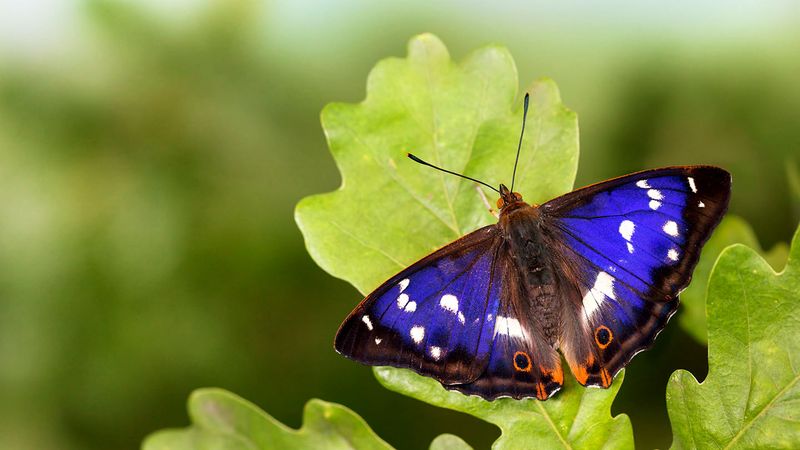
The Purple Emperor is a regal butterfly, known for its iridescent purple wings that shimmer in the sunlight. Found in the woodlands of Europe, it is often seen high in the tree canopy, descending only for food.
Its diet includes tree sap, dung, and carrion, rather than nectar, setting it apart from other butterflies. The Purple Emperor’s elusive nature and striking appearance have made it a subject of fascination and study.
Observing this butterfly is a rare treat, offering a glimpse into the hidden wonders of forest life.
Adonis Blue
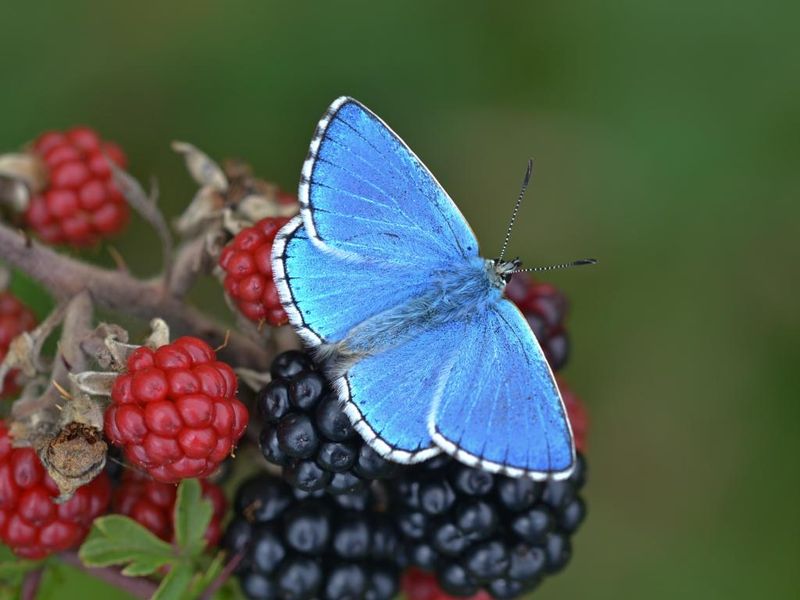
The Adonis Blue butterfly is a stunning sight, with bright blue wings adorned with intricate black spots. Found in grasslands across Europe, it is a symbol of biodiversity and conservation.
The males boast the vivid blue coloration, while females are more subdued, aiding in their survival. The Adonis Blue’s lifecycle is closely tied to the presence of wildflowers and ants, which protect its larvae.
Its vibrant colors and delicate interactions within its ecosystem highlight the intricate balance of nature’s artistry.
Eastern Tiger Swallowtail
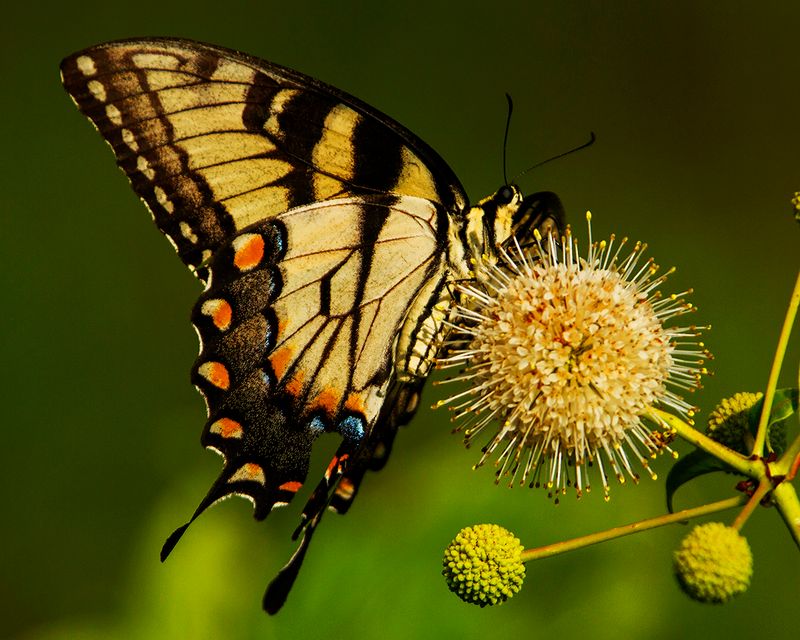
The Eastern Tiger Swallowtail butterfly is a spectacular sight, with its yellow and black striped wings reminiscent of a tiger’s coat. Common in North America, it graces gardens and forests with its elegant presence.
The males exhibit vibrant yellow coloration, while females may display blue and black variations, adding to their allure. Their larvae resemble bird droppings, providing an effective disguise against predators.
The Eastern Tiger Swallowtail’s beauty and adaptability make it a favorite among butterfly watchers and a symbol of nature’s creativity.
Black Swallowtail
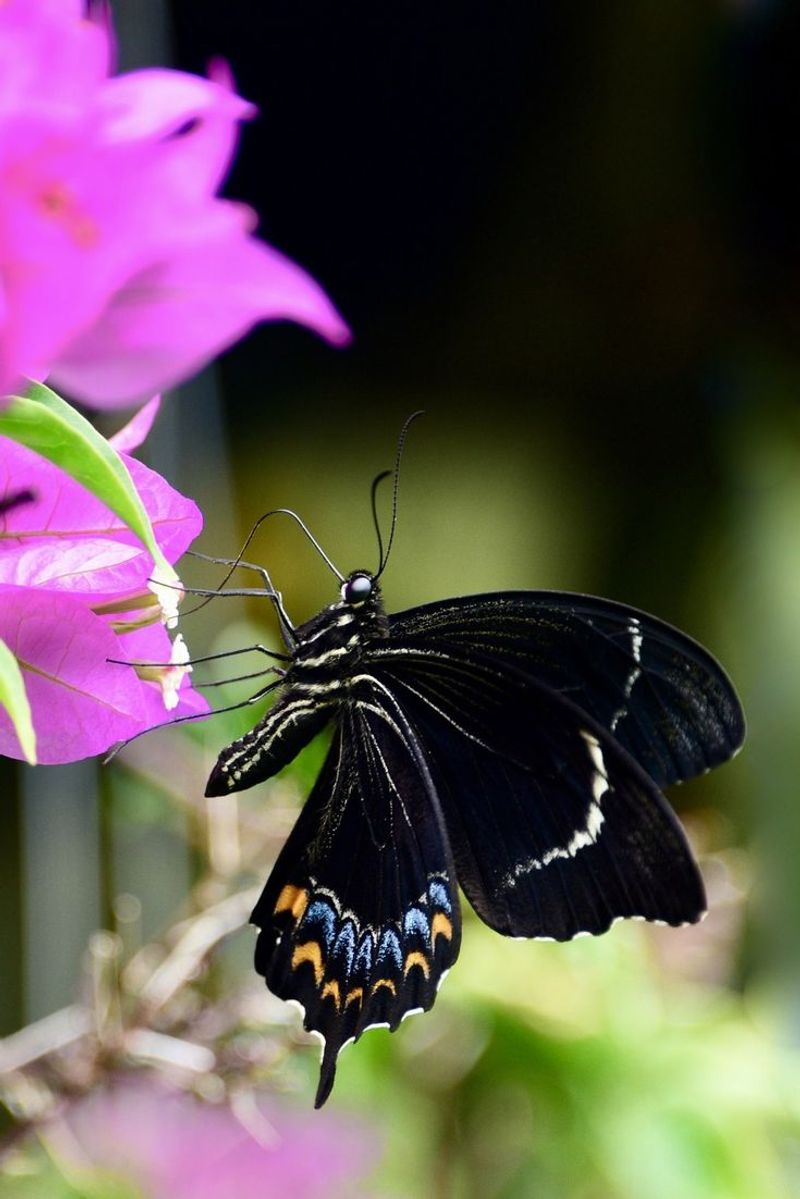
The Black Swallowtail butterfly captivates with its striking black wings, accented by vibrant blue and orange spots. Found throughout North America, it is a frequent visitor to gardens, especially those with parsley and dill.
Its caterpillars mimic bird droppings, providing a clever defense against predators. As adults, they flutter gracefully among flowers, contributing to pollination.
The Black Swallowtail’s vivid colors and dynamic flight patterns make it a favorite for photographers and gardeners alike, embodying the beauty and resilience of the natural world.
Cabbage White
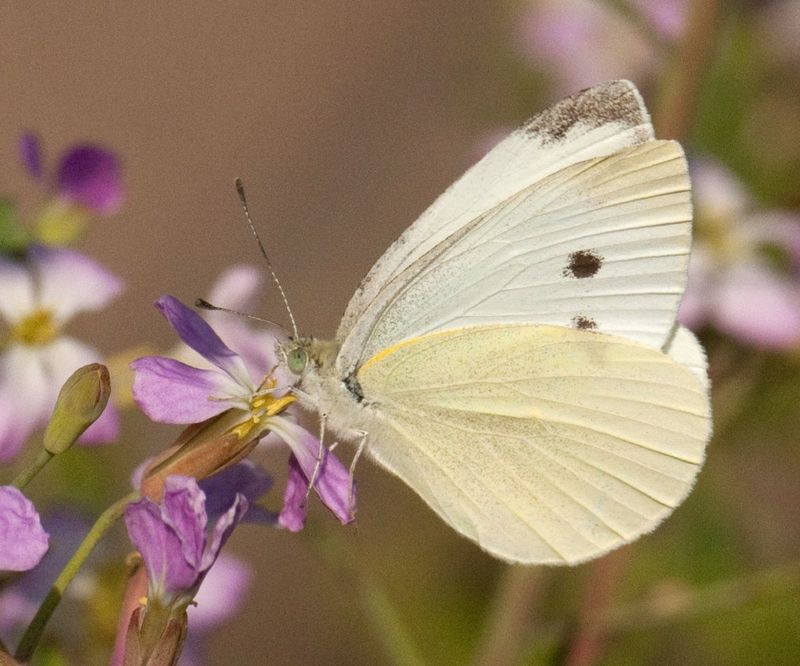
The Cabbage White butterfly, with its simple white wings and small black spots, is a ubiquitous presence in gardens and fields. Originally from Europe, it has spread across North America, where it is both admired and considered a pest.
Its larvae feed on cabbage and other cruciferous plants, making its management essential for gardeners. Despite its plain appearance, the Cabbage White is a vital part of the ecosystem, contributing to pollination.
Its adaptability and widespread presence make it a fascinating subject for studies on migration and adaptation.
Small Tortoiseshell
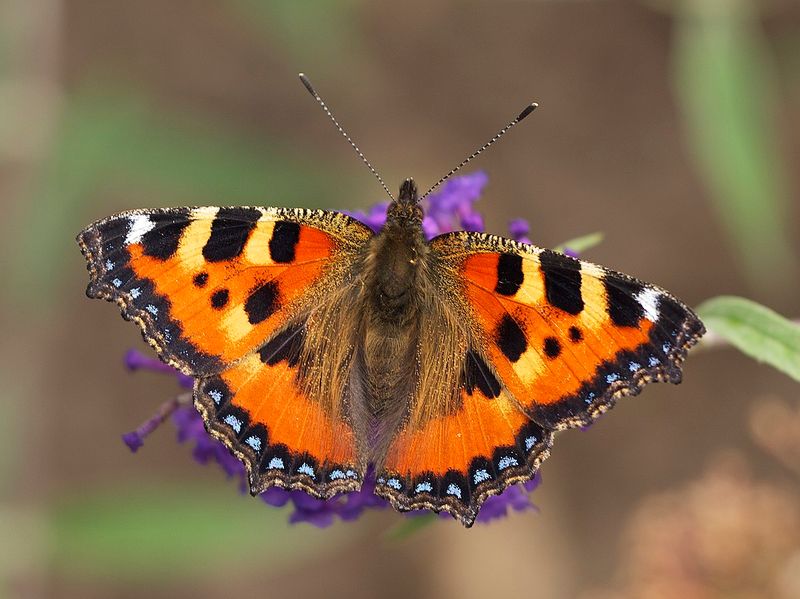
The Small Tortoiseshell butterfly is a vibrant presence with its orange and black patterned wings. Common across Europe, it thrives in gardens and fields, where it feeds on nectar and overripe fruit.
Known for its territorial behavior, this butterfly often defends its chosen feeding spots from rivals. Its vivid colors serve as a warning to predators, showcasing the effectiveness of nature’s defenses.
The Small Tortoiseshell’s lively appearance and bold behavior make it a favorite among nature lovers and a symbol of spring’s arrival.
Brimstone Butterfly
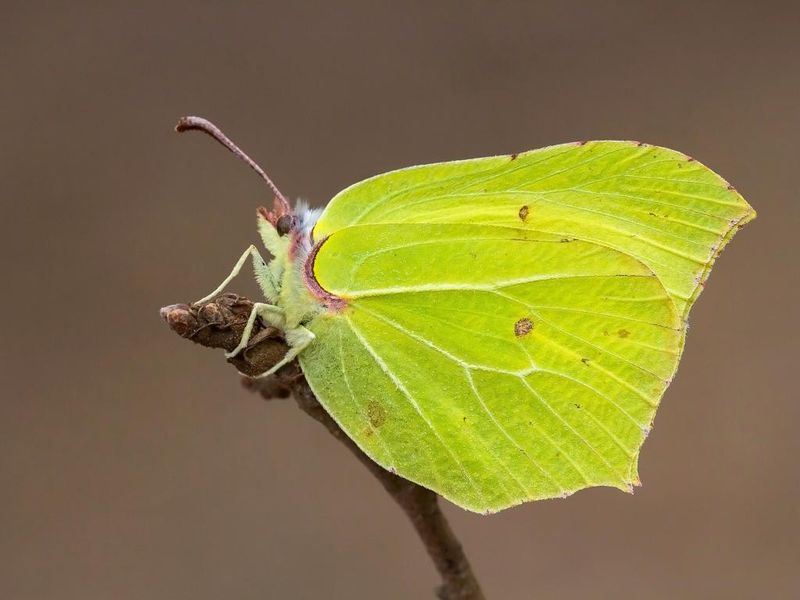
The Brimstone butterfly is an early harbinger of spring, with pale yellow wings that blend seamlessly into its surroundings. Found across Europe and Asia, it is often seen fluttering among primroses and other wildflowers.
This butterfly’s camouflage is so effective that it often appears invisible when at rest. Its lifecycle is closely tied to the buckthorn plant, upon which its larvae feed.
The Brimstone’s delicate beauty and subtle presence make it a cherished sight in any spring landscape, symbolizing renewal and the gentle return of warmth.
Red Lacewing
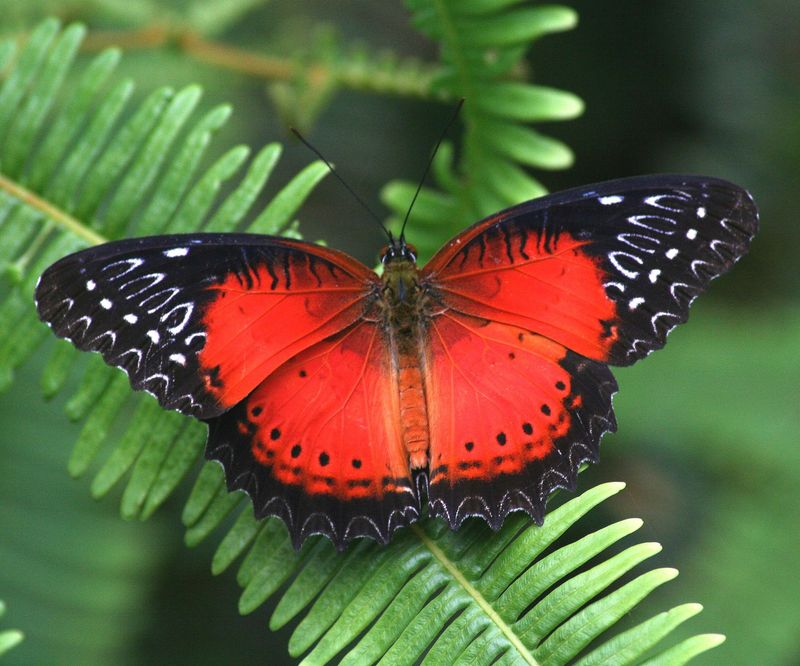
The Red Lacewing butterfly is a striking sight with its orange and black lace-like wing patterns. Found in Southeast Asia, it thrives in tropical gardens and forests, where it feeds on nectar from a variety of flowers.
Its intricate patterns not only deter predators but also captivate the human eye, making it a favorite among butterfly collectors. The Red Lacewing’s adaptability to different habitats highlights the resilience and beauty of tropical ecosystems.
Observing this butterfly is akin to watching a piece of living, fluttering art.
Purple Hairstreak
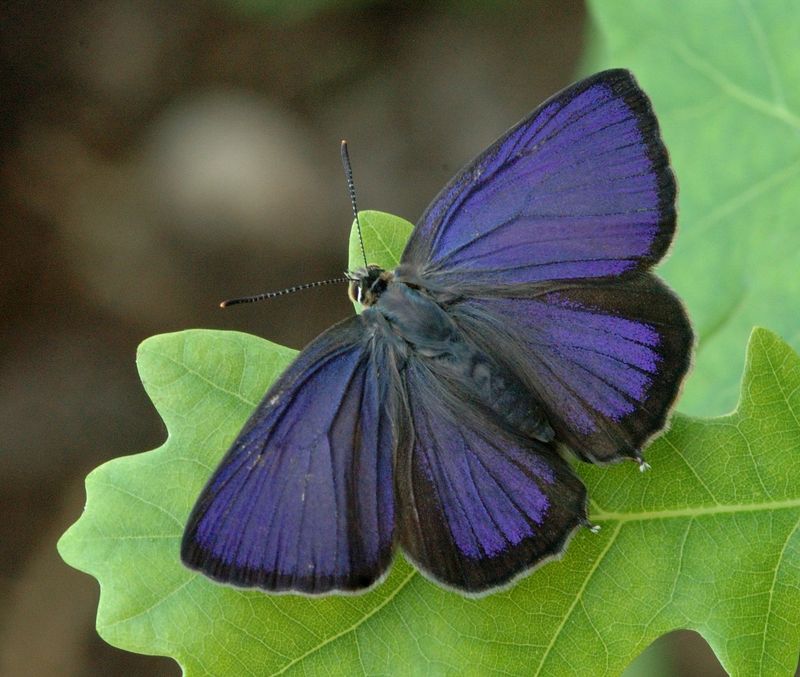
The Purple Hairstreak butterfly is a subtle beauty, with delicate purple hues on its wings that shimmer in the sunlight. Found in oak woodlands across Europe, it spends most of its life high in the tree canopy.
Its presence is often revealed by its distinctive flight, a rapid and erratic dance among the leaves. The Purple Hairstreak’s reliance on oak trees for survival highlights the importance of these habitats.
Its elusive nature and understated elegance make it a treasured find for butterfly enthusiasts and a symbol of woodland charm.

